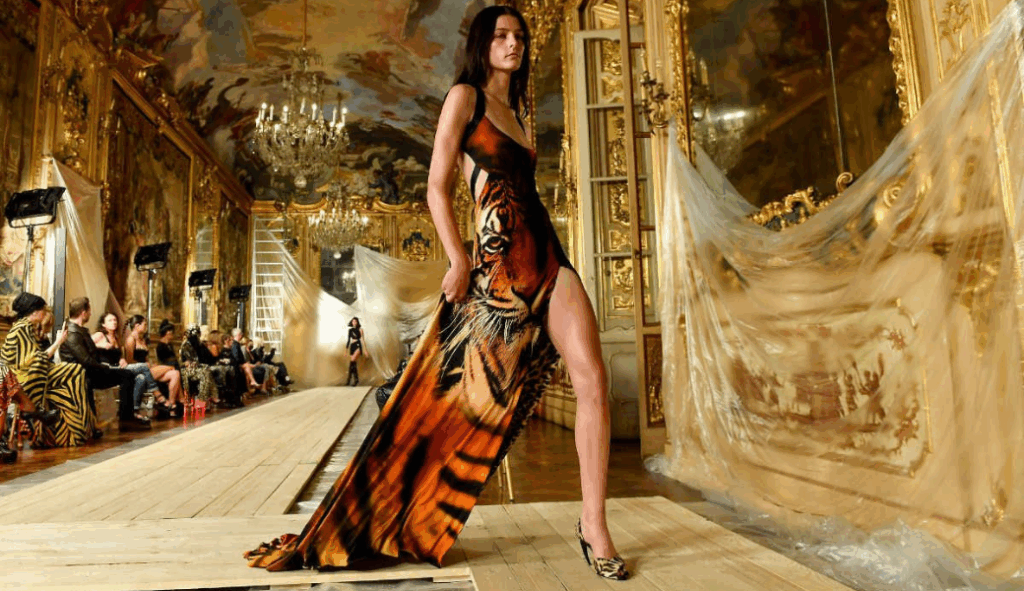In the second episode of Fashion and Florence, our journey through the intimate ties between iconic fashion houses and the Renaissance city brings us to a name synonymous with sensuality, boldness, and wild elegance: Roberto Cavalli. A native Florentine, Cavalli’s legacy is deeply intertwined with the city’s artistic heritage and daring spirit—qualities that shaped both the designer and his global brand.
Born in Florence in 1940, Roberto Cavalli inherited the city’s innate appreciation for art and craftsmanship. He studied at the Accademia di Belle Arti di Firenze, where his early exposure to the Renaissance masters would influence his approach to fashion design. Cavalli’s use of intricate prints, rich textiles, and nature-inspired motifs was a bold reimagining of Florence’s opulent aesthetic heritage.
In the heart of Florence Fashion Scene
But Cavalli didn’t just draw inspiration from Florence—he gave back to it. His flagship store and café, once located on Florence’s most elegant street, Via Tornabuoni, cemented his presence in the very heart of the city’s fashion scene. Cavalli’s brand not only captured international acclaim but also stood as a proud ambassador of Florentine flair, sensuality, and innovation.
Here at Antica Torre Tornabuoni, we feel a special connection to this story. Nestled on Via Tornabuoni itself, our historic residence is surrounded by the most prestigious names in fashion. From Gucci to Salvatore Ferragamo, and of course, Roberto Cavalli, this street has long been the pulse of haute couture in Florence. As neighbors to these icons of style, Antica Torre Tornabuoni has become a favored address for fashion lovers and industry insiders alike.
Our location is more than just a backdrop—it’s a bridge between Florence’s storied past and its vibrant present. As we celebrate Roberto Cavalli’s enduring influence in this episode, we also honor the shared legacy of style, creativity, and elegance that defines both the fashion world and the city we call home.
Stay tuned for the next chapter of Fashion and Florence, as we continue to explore the city’s role as muse, maker, and marketplace for the world’s greatest fashion minds.

